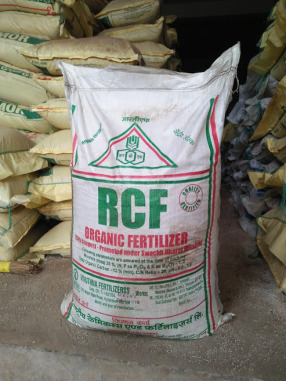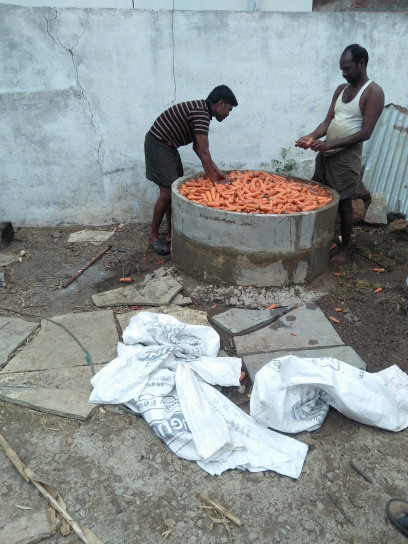Circular sanitation economy in India: Evidence from Amberpet sewage treatment plant
This blog by Sourav Mohanty is the third in a series of blogs about the work of the Rurality as a Vehicle for Urban Transformation (RUST) project. It was originally posted on the RUST website.

Swachh Bharat (Clean India) Mission was launched in the year 2014 with an aim at achieving clean and sanitised cities and villages. Open Defecation Free country was a major target of SBM. However, simply placing the infrastructure does not serve the purpose of the mission. The biggest challenge India will be facing is the safe disposal and treatment of the generated waste.
Circular Sanitation Economy as an approach can provide a solution to the above mentioned challenges. The Circular Sanitation Economy is the toilet resources that feed into a system that replaces a traditional waste management with a circular economy approach. It connects the biocycle, using multiple forms of biological waste, recovering nutrients and water, creating value adding products such as renewable energy, organic fertilisers, proteins and more. It provides a robust marketplace of products and services, renewable resource flows, data and information that could transform future cities, communities, and businesses (TBC, 2017).
The Government of India has taken several initiatives to deal with the waste generated across the country. Mitigation of sewage pollution in the Musi River of Hyderabad is one such effort made by the government. Hyderabad Metropolitan Water Supply & Sewerage Board had taken up a project for “Abatement of pollution to Musi River” which was successfully completed and commissioned by 2009. The 4 Sewage Treatment Plants (STPs) [SM1] constructed were at Amberpet (339MLD), Nagole (172 MLD), Nallacheruvu (30 MLD) and Attapur (51 MLD) within the city of Hyderabad [SM2] . The first three STPs use the UASB (i.e. Upflow Anaerobic Sludge Blanket) process and the last one in Attapur uses SBR (Sequential Batch Reactor) process of technology [SM3] . All the STPs are positioned alongside the river Musi so that the polluted water that is being drained into the river undergoes treatment and converted into water of river standards.
Our study focuses on Amberpet STP since it is one of the biggest plants with UASB technology in Asia in terms of capacity (i.e. 339 MLD). The study has given some interesting insights to the process of waste water treatment. STPs are facilities where combination of various physical, chemical and biological processes is used to treat waste water from domestic sewers or industrial effluents as the case may be.

An attempt has been made to understand the technical and economic aspects of the functioning of the waste water treatment plant. Waste water is being treated in primary and secondary units of the plant. The treatment of waste water leads to the generation of electricity, sludge cake and treated water. The power requirement for the running of the STP is 2.3 Mwh and the probable power generation is 0.6 to 0.9 Mwh which is approximately 25-40% of the internal demand for power. The generated electricity is being used only for internal consumption.
The treatment of waste water leads to the formation of sludge as a by-product in the UASB technology used in the Amberpet STP. The belt filter press machines used are instrumental in separating the sludge from the waste water. This separated sludge is being collected and dumped in the yard near to the treatment unit. This sludge is then being sold to external agencies which prepare compost out of it and sell it in the market. The data of sludge produced in the reactors are: Wet sludge- 1380 CUM/Day and Manure – 165 CUM/ day (HMWSSB, 2019). Sludge is being processed by external agencies to be later used as compost for agriculture.
The treated water is being drained back to the river Musi after it attains the disposable standards set by the National River Conservation Directorate.
The value chain associated with the sludge is being studied through interviews of various stake holders such as the manufacturers, retailers, distributors and farmers. The sludge is being purchased by a company named Vinuthna Fertilizers which further processes it in various stages to form compost. This compost is being marketed by Rashtriya Chemical Fertilizers through a network of distributors and retailers. This final product named as RCF City Compost is being purchased by farmers and used for agricultural purpose.
 An analysis of assistance provided for the development of market for city compost has been done. The central government provides a Market Development Assistance (MDA) of Rs.1500 per tonne of compost to RCF under the Swachh Bharat Mission. A fixed amount of Rs. 1500 MDA per tonne is provided to the marketer of city compost by the Department of Fertilizers. This assistance not only lowers the MRP for the farmers but also scale up production and consumption of city compost. The observations made while interviewing the farmers in different villages were that they lacked a clear understanding of the usage of the city compost. They are in a stage of experimentation with the use of city compost in cultivation. Although a positive attitude towards the compost could be traced in the interviews. Few of them ascertained that their yield has increased after they started using the city compost, especially for the vegetables. This gave the necessary insight into the effectiveness of promotional measures for city compost.
An analysis of assistance provided for the development of market for city compost has been done. The central government provides a Market Development Assistance (MDA) of Rs.1500 per tonne of compost to RCF under the Swachh Bharat Mission. A fixed amount of Rs. 1500 MDA per tonne is provided to the marketer of city compost by the Department of Fertilizers. This assistance not only lowers the MRP for the farmers but also scale up production and consumption of city compost. The observations made while interviewing the farmers in different villages were that they lacked a clear understanding of the usage of the city compost. They are in a stage of experimentation with the use of city compost in cultivation. Although a positive attitude towards the compost could be traced in the interviews. Few of them ascertained that their yield has increased after they started using the city compost, especially for the vegetables. This gave the necessary insight into the effectiveness of promotional measures for city compost.
In addition to existing set of promotional measures, awareness programmes for explaining the benefits of compost can be organised by government agencies. There is a need to look beyond the treatment of waste water as development of infrastructure for collection and reuse of this treated water can give huge earning to the STP. This will not only create a new market for the treated water but also help the government to generate new source of revenue.